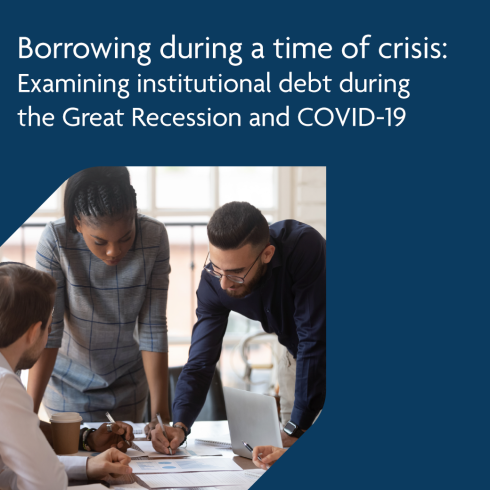Although debt is an important tool institutions use to meet strategic goals, many higher education stakeholders have only a limited understanding of the process of institutional borrowing.
Summary
Institutional borrowing, or the debt a college takes on as an organization, is an understudied but important tool for colleges to meet strategic goals. Widespread crises, such as the Great Recession and COVID-19, can impact an institution’s financial health and create instability that may alter debt-related planning and access to debt markets. This study examines how postsecondary, nonprofit institutions make borrowing decisions during times of crisis.
Key Insights
- HBCUs and public institutions were more likely to increase total debt during the Great Recession.
- HBCUs have historically been underfunded, and the financial strain of the recession likely forced these colleges to access debt markets to ensure they continued to operate.
- Public institutions faced declining state support during the Great Recession, which may have impacted their need for debt to fund certain projects that had been cut from state budgets.
- Overall, institutions that increased debt during the Great Recession appeared to strategically invest in opportunities that allowed them to better serve students.




